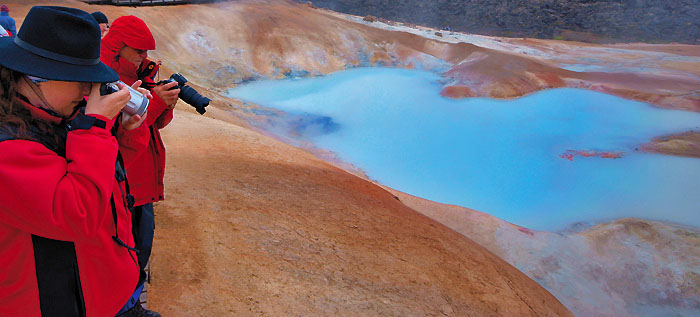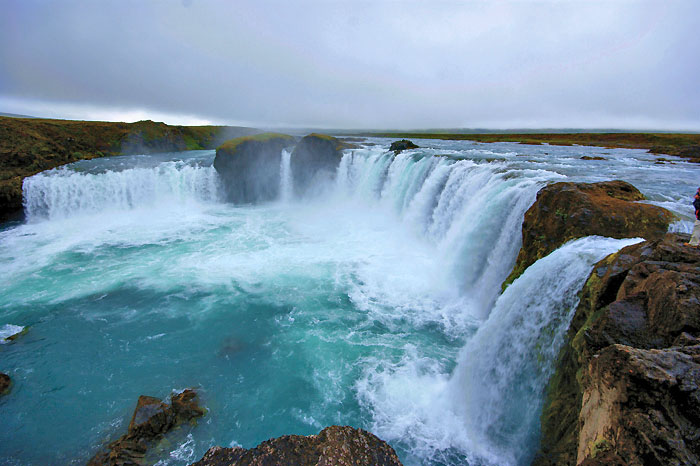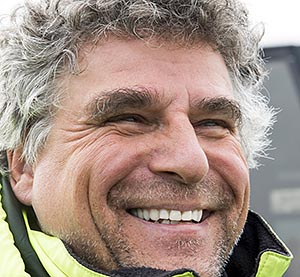15 days Iceland (summer)
J 1: Arrival & meeting in Reykjavik
Arrival in Iceland, Keflavik airport and own transfer (25 km) to the guesthouse in central Reykjavik (by regular flybus or taxi). Meeting of the group in the evening (around 8 pm).
J 2: From Reykjavik via Geysir / Gullfoss to Kerlingarfjöll
Some first day natural highlights whilst traveling from Reykjavik via Geysir / Gullfoss to Kerlingarfjöll!
J 3: Kerlingarfjöll - the golden mountains
Easy hikes in the geothermally active area of Kerlingarfjöll, one of Iceland's most spectacular landscapes and known for its multi-colored and bizarre rock formations, geysers, warm ponds, and fumaroles.
J 4: Kerlingarfjöll - Dalvik
the thermal area of Hveravellir – a fascinating world of hot thermal springs, where we can take a hot bath. Continue via to small village of Hofsós and admire particularly slender basalt columns on the coast. Next is a wonderful scenic drive around the large Tröllaskagi Peninsula and through the dreamy fishing villages Siglufjördur and Olafsfjördur to Dalvik.
J 5: Whale-Watching - Godafoss waterfall - Mývatn
After breakfast go for whale-watching in the large Eyafjördur near Dalvik (optional 75 EUR).
Continue Akureyri to the legendary horseshoe-shaped Goðafoss waterfall, whose waters cascade dramatically over several parallel steps into the depths of a gorge. Discover the natural beauties around Mývatn lake, a place full of unique volcanic features: pseudo-craters, deep fissures, explosion craters, ancient lava lakes and much more.
J 6: Natural wonders of Mývatn
Today is to discover the natural wonders around the Mývatn lake in Iceland's center: pseudocraters, deep crevasses, various explosion craters, active fissure volcanoes, young and ancient lava fields.
We take a few short walks to see these attractions in the area. If you like, you can also enjoy a natural thermal bath in the surreal landscape all around Myvatn.
J 7: Askja volcano
Visit Askja volcano and its huge caldera, the Ódáðahraun lava desert, Viti crater and Öskjuvatn lake. Return to Mývatn (night in same guesthouse).
J 8: Dettifoss – Borgarfjördur Estri - Puffins
Visit Dettifoss waterfalls, Europe's largest, continue to the east coast, observe puffins.
J 9: Into the East Fjords
Travel to Iceland's remote East Fjords, observe spectacular waterfalls along the way. Overnight in guesthouse in Berunes.
J 10: Jökulsárlón - Diamond Beach - Ingolfshöfði
Day to explore and photograph the wonderland created by larger and smaller glacier tongues and lagoons around Jökulsárlón. Option to visit Ingolfshöfði island nearby.
J 11: Via Skaftafell to Landmannalaugar - mountains, glaciers and volcanoes
From the glacier lagoon onwards to explore Skaftafell national park with Svartifoss waterfall before traveling to the southern highlands and arriving at Landmannalaugar.
J 12: Landmannalaugar - colourful mountains and hot springs
Entire day to explore the colourful scenery of Landmannalaugar and the area´s hot springs.
J 13: From Landmannalaugar to Cape Dyrhólaey
Drive back to the south coast for a second chance to admire and photograph the magnificent mountain landscape in a better light. Continue to Cape Dyrhólaey, the huge rock arch at the southern tip of Iceland, and stroll around the large black beach Reynisfjara in the afternoon and evening, located right near our guest house.
J 14: Return to Reykjavik
On the way back to Reykjavik, the visit of two large, beautiful waterfalls Skogarfoss and Seljalandsfoss at the feet of infamous Eyafjallajökull volcano.
J 15: Departure from Iceland
Own transfer to the airport in time for your flight.




